#Michele Di Monte
Explore tagged Tumblr posts
Text
Here's a special promo video for the series The Count of Monte Cristo that aired today on Rai
#the count of monte cristo#il conte di montecristo#sam claflin#jeremy irons#edmond dantes#nicolas maupas#le comte de monte cristo#michele riondino#blake ritson#lino guanciale#ana girardot
62 notes
·
View notes
Text
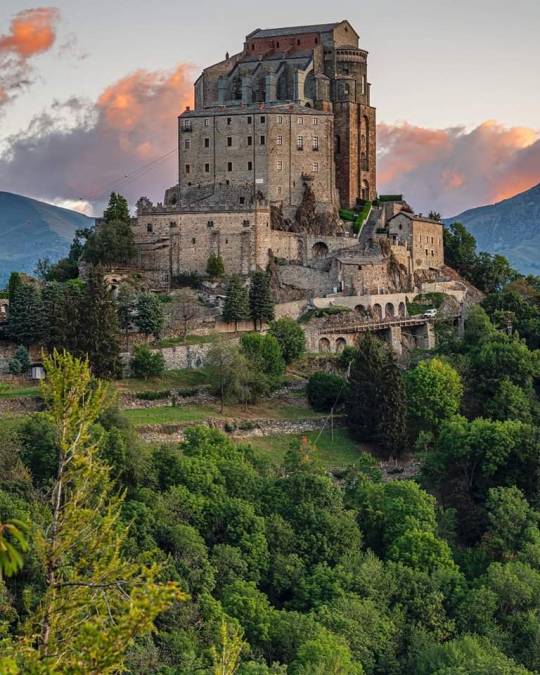
Sacra di San Michele - ITALIA
#sacra di san michele#saint michael#abbey#abadia#san miguel#mount#montagna#monte#pirchiriano#val di susa#torino#turin#piedmont#piemonte#piamonte#italia#italy#europe#europa
97 notes
·
View notes
Text

12 notes
·
View notes
Text
Bille August to Direct Mediawan Series 'The Count of Monte Cristo'
Nah guys! I'm so excited for this!! The moment these two italian beauties land on international screens it is OVER for everyone!!


(Lino Guanciale on the left and Michele Riondino on the right)
#lino guanciale#michele riondino#conte di montecristo#count of monte cristo#sam claflin#jeremy irons
4 notes
·
View notes
Text
Basta aprire un fico e metterci dentro il dito per capire come mai fica era già usato dai greci e dai latini per indicare l'organo sessuale femminile, non ci vuole un professore, figa è invece la variante settentrionale ("fica, non figa", Michele Apicella, Ecce Bombo, agevolo filmato). Fessa è invece prettamente meridionale, con il significato di fessura ("quella fessa che tieni ov’han la bocca le persone", Carducci). Mona è veneto, di origine incerta (si potrebbe arrischiare un'assonanza con monna, ma fermiamci qui). Passera è toscano, come topa, a suggerire una predilezione dei toscani per il crine, idem sorca, ma romano. Patata con riferimento forse al monte di Venere. Dove sono cresciuto, nel basso mantovano, erano in voga due termini: gnal, cioè nido, e brögna, prugna, entrambi di facile lettura. Il napoletano, sempre esagerato, la chiama pucchiacca, da portulaca, o erba fratesca, ma c'è chi ne dà un'interpretazione a dir poco epica, dal greco pyr (fuoco) e koliòs (fodero): fodera di fuoco. Vulva è latino che richiama le valve, mentre vagina è latino per guaina/fodera (gladius vagina vacuus, cioè la spada sguainata dal fodero vuoto, vacuus). Prossimo excursus: il pene (ho preferito iniziare dalle signore per galanteria).
63 notes
·
View notes
Text
I was curious and had time on my hands so I decided to count all the times characters in the Riordanverse cursed. I always see people talking about how much Percy definitely cusses a lot since he's a New Yorker, so I wanted to see how he compared to the rest of the cast. I included all mentions of a named character cursing, even if it's just something like “Oh, Styx” if the narrator specifically calls it a curse. This is almost definitely not 100% accurate and was just a fun pastime, please don't judge me if I incorrectly counted the amount of times a character swears 😂
1 count of swearing:
Grover Underwood
Hermes
Circe
Zoë Nightshade
Daedalus
Hephaestus
Dionysus
Midas
Thalia Grace
Hyperion
Connor Stoll
Travis Stoll
Hades
Hera
Rachel Dare
Ephialtes
Lou Ellen Blackstone
Nike
Arrow of Dodona
Kayla Knowles
Paolo Montes
Damien White
Chiara Benvenuti
Peaches
Nero
Luguselwa
Julius Kane
Amos Kane
Bast
Michel Desjardins
Set
Halfborn Gunderson
2 counts of swearing:
Atlas
Luke Castellan
Polyphemus
Jason Grace
Medea
Meg McCaffrey
Caligula
Sadie Kane
Zia Rashid
Setne
Thor
Alex Fierro
3 counts of swearing:
Reyna Avila Ramírez-Arellano
Piper McLean
Bes
Hearthstone
4 counts of swearing:
Coach Hedge
Ares
Calypso
5 counts of swearing:
Hazel Levesque
Blitzen
Samirah al-Abbas
6 counts of swearing:
Carter Kane
7 counts of swearing:
Nico di Angelo
Apollo
Frank Zhang
Arion
Magnus Chase
9 counts of swearing:
Annabeth Chase
11 counts of swearing:
Mallory Keen
12 counts of swearing:
Leo Valdez
17 counts of swearing:
Percy Jackson
I am not at all surprised by Percy's filthy mouth but I was not expecting Annabeth, Frank, and Carter to swear so much while Sadie and Alex swore so little. You learn something new everyday.
#what am I doing with my life#leigh rambles#I'm aware that the ones with more page time have the most opportunities to say stuff but I choose to ignore it#this is not including the senior year adventures because I have not read them yet#pjo#pjo hoo toa#hoo#toa#percy jackon and the olympians#the heroes of olympus#the trials of apollo#the kane chronicles#magnus chase and the gods of asgard#mcga#riordanverse#rrverse
25 notes
·
View notes
Text
It's not every day that an international star turns out to be approachable and easy-going. Instead, while I'm talking to Sam Claflin, I feel like I'm chatting with a friend with whom I can discuss any topic, even astrology. "But is my star sign, Cancer, really resentful? Just like my Edmond Dantès," says the English actor. Yes, because on January 13, a blockbuster version of "The Count of Monte Cristo" will be broadcast on Rai1, a story of the most famous revenge in literature, written by Alexandre Dumas in 1844. And Claflin is the protagonist. The miniseries directed by Danish director Bille August, two-time winner of the Palme d'Or at Cannes, is just the latest in a long series of adaptations. The first short film dates back to 1908, the first film was in 1922, and sound hadn't been invented yet! Since then, there have been 12 other films, five TV series, a stage musical and even a Japanese animated series. This new international TV version, produced by Palomar with Demd Productions, Rai Fiction, France Télévisions, Mediawan Rights and Entourage Ventures, promises to do justice to the over 1,200 pages of the novel. The beginning of the story? Dantès is a sailor who on his wedding day is unjustly accused of treason and thrown into prison. After 15 years, he escapes with one goal: to take revenge on those who framed him. Claflin knows a thing or two about adaptations: he made his debut in 2010 with the miniseries “The Pillars of the Earth,” based on the novel of the same name by Ken Follett, and in 2013 he became famous in the role of Finnick Odair in the “Hunger Games” films, based on the famous literary saga.
With such a “bookish” CV, who knows what a thrill it must be to play one of the most famous characters in literature. «Actually, I confess that I only knew the title of the novel, I didn’t know anything else. But I understood that it was a big deal when I told my friends: they were more excited than me».
But it's one of the most famous books ever! "I know, I know ( laughs ). But I have to make a confession: I'm not an avid reader and, as an actor, I prefer that my first approach to a role comes from the script, without having preconceptions or judgments about the work itself."
But did he read the novel? "Of course, and I understood why it's so long: readers of the time read it in installments in the newspaper. For them it was a bit like today's TV series. In those days, people didn't travel much, so a book like "The Count of Monte Cristo", which touches on so many different places, allowed ordinary people to explore the world with their imagination, from the comfort of their homes."
Have you seen any of the adaptations that have already been made? «During filming I watched “Monte Cristo”, the 2002 film with Jim Caviezel because I was curious to find out how they managed to concentrate so many events and characters in just two hours. It seemed impossible to me, we take almost eight!».
The production actually seems impressive: how long did the shooting last? «About six months, and we traveled a lot: we started in Paris, then we went to Turin, Rome and finally to Malta».
Had you been to Italy before? "I had already visited Rome, Florence and Amalfi in the past. Turin turned out to be a hidden gem, I fell in love with its architecture. Coming back to Rome is always magical: it is a unique city, an open-air museum. It is my favorite European capital. And then there is no other: Italian cuisine is too good!"
“The Count of Monte Cristo” is an international series, with English, French, Italian and other actors. Ask us a question: did Lino Guanciale and Michele Riondino teach you how to pronounce a few sentences in Italian? «Yes. I would have liked to show off my new linguistic knowledge, but I have a terrible memory: I’ve already forgotten everything!».
So we are still waiting for him in Italy to speak our language together. In the meantime, he confides in us what were the most tiring moments on the set? "Definitely the endless make-up and hair sessions when I was filming the scenes in prison, with a beard and very long hair. Imagine that to make the wig more realistic they had to apply almost every hair individually. We started at dawn!"
The hardest day? "When we shot the opening scene, with the ship in the middle of the storm. We had a machine to create the wind and another for the rain, and on top of that the ship was rocking: the noise was so loud that we couldn't hear the director's instructions! On top of that, we shot it in winter, so it was freezing."
Edmond Dantès is a master of disguises. Do you also have some “tricks” to avoid being noticed by people on the street? «The secret is my children ( Pip and Margot, 9 and 7 years old, had by his ex-wife, the actress Laura Haddock, ed. ). I don't know why, but when I walk around with them no one recognizes me. However, when I finish shooting a film or a series, I immediately change my hairstyle to distance myself from the character. If I haven't had a beard for many months, for example, the first thing I do is let it grow back. Maybe this also helps to muddy the waters a bit».
Would you prefer to be recognized more often? "Not a chance! In recent years I've worked with fellow actors who are so targeted by paparazzi that they need bodyguards 24 hours a day. A nightmare. I think the best thing to do to not attract attention is to behave normally: if you wear sunglasses indoors, people will notice you."
You play one of the most vengeful characters in history. Are you a resentful person or do you forgive? "I would like to belong to the second category, but the truth is that I bear resentment. I am willing to give a second chance to those who have wronged me, but if they continue to behave badly I don't want to know about it anymore."
Have you ever taken small revenge? "No, I try to avoid conflicts, I never fought even as a kid ( laughs ). And then I'm lazy: taking revenge requires too much time and patience. I prefer to hope that karma punishes those who make others suffer."
What did the character of Dantès teach you? "Every role I play allows me to discover something more about myself. Edmond Dantès certainly has admirable qualities because he is methodical, loyal and full of motivation. Of course, then he is blinded by revenge, so perhaps he taught me precisely this: to never lose sight of the things that are truly important."
Dantès moves to Paris. You too have moved to a metropolis: after high school you moved to London to study acting. "I grew up in a small town 150 kilometers from London, which has always had an incredible fascination for me. When I took the big step and moved there, I understood that it was my place. I have lived there ever since and I am happy."
Let's close with a movie question: a movie that changed your life? «“Notting Hill”, the amazing 1999 comedy directed by Roger Michell with Hugh Grant and Julia Roberts. It's a perfect movie and I watch it every time I feel down. I'm an incurable romantic, it helps me believe that there's the right person for me out there».
Translated by Google Chrome. I amended Margot's age from 6 to 7 as she's just had her birthday.
#sam claflin#samblogging#the count of monte cristo#sam claflin monte cristo#this is what i want more of#tell me about the shooting. the locations. the co-stars#italian media will be the only one to give us anything#side note. i don't get his fascination with notting hill#but that means he wanted to work with roger michell which resulted in my cousin rachel 2017 so that's good#mypost
10 notes
·
View notes
Text
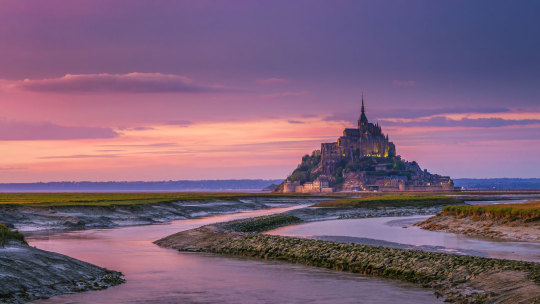

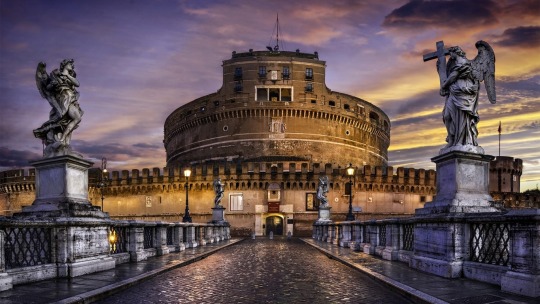
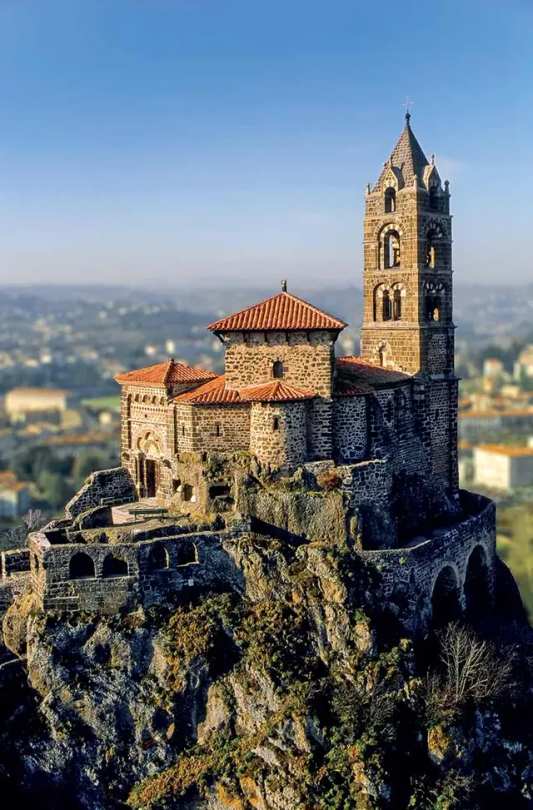
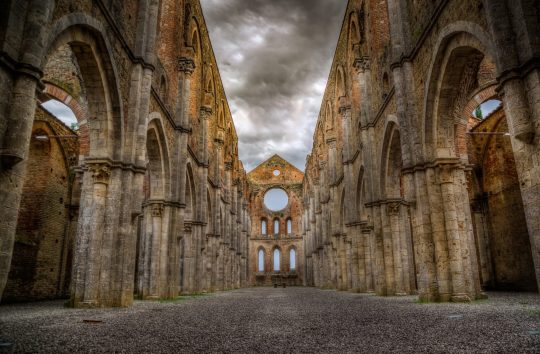
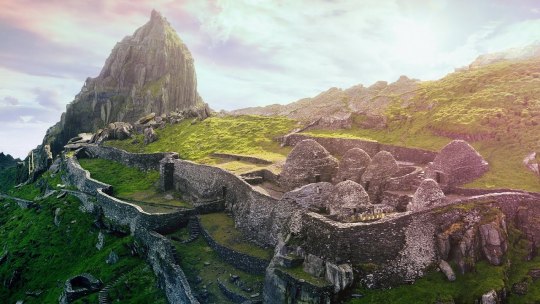
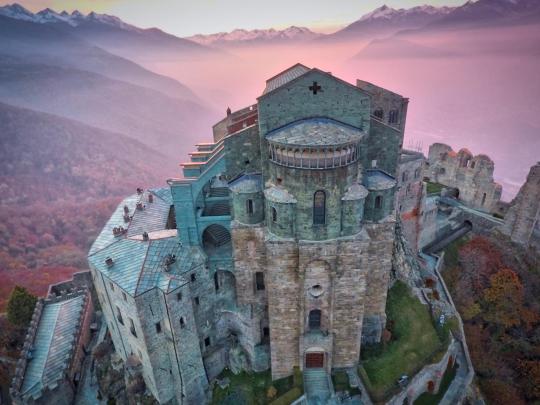

Shrines to St. Michael.
"Mountains figure prominently at the mighty ganglia of the story of Christianity... As Jesus prays atop the holy mountain, the other world intersects with ours as the divine comes down to the human, as the eternal touches the temporal and mortal. And that other world is the ultimate reality, not this one. No wonder that St Michael, ‘Quis ut Deus,’ has his shrines on lofty peaks; no wonder the Celts worshipped on hills and mountains...
The spirit of the Archangel Michael permeates discussion of the world of the Celts—shrines such as Skellig Michael on precipitous mountain-tops in the cold and wet Celtic desert; early connections with the ancient Eastern world; guardianship of Tuscany, Provence, Normandy, and Cornwall; safe-keeping of wanderers and hermits; motifs of spear, sword, and stone; waging of the war in Heaven and the downfall of Lucifer; the communion of the Grail."
St. Michael: Early Anglo-Saxon Tradition, Raymond JS Grant
(1) Mont St. Michel, Normandy, France; (2) St. Michael’s Mount, Cornwall, England; (3) Castel Sant’Angelo, Rome, Italy; (4) Saint-Michel d’Aiguilhe, Le Puy-en-Velay, France; (5) Abbey of San Galgano, Siena; (6) Skellig Michael, County Kerry, Ireland; (7) Sacra di San Michele, Mount Pirchiriano, Turin, Italy; (8) St. Michael’s Tower, Glastonbury Tor, England
#st michael#saint michael the archangel#mont saint michel#st michael's mount#castel sant'angelo#saint-michel d'aiguilhe#skellig michael#glastonbury#glastonbury tor#celtic christianity#celtic#celts
77 notes
·
View notes
Text
quarter one favorites! tw: suicide, grief, murder & depression mention in descriptions below.
Crying in H Mart by Michelle Zauner - a memoir about a young woman & the death of her mother. Reading about other people's grief helps me understand my own.
The Sword of Kaigen by ML Wang - a fantasy about a mother with a violent past and her teenaged son struggling to prove himself as he begins to realize that the empire he serves may not be as pure as he once thought. Really cool use of elemental powers here, and incredible fight scenes. I love reading books with unique characters/relationships, and these are definitely unique. Graphic made here.
Everyone on this Train is a Suspect by Benjamin Stevenson - sequel to one of my favorites from last year (Everyone in My Family Has Killed Someone). Funny and voicey and incredibly meta, I love these books and I hope there are more!
Lonely Castle in the Mirror by Mizuki Tsujimura - Translated from Japanese, this is such a unique blend of fantasy and coming-of-age. Kokoro is a middle school student who is can no longer bring herself to attend school. As she struggles with her depression, she finds a portal in her mirror to a mysterious castle. Six other children are there, and they begin to understand each other. Trigger warnings for depression & suicidal ideation. Graphic here.
The Mysterious Case of the Alperton Angels by Janice Hallett - I LOVE Janice Hallett's books, which are all mysteries told through emails, interview transcriptions, diary entries, chat logs, etc. This one is about a journalist investigating a years-long cold case about a cult who brainwashed a young woman into believing her baby was the Antichrist. When the young woman realized her mistake and called the police, the cult committed suicide and the baby & mother disappeared. As the journalist digs through case files in order to find them, she finds herself drawn into becoming part of the mystery.
Anita De Monte Laughs Last by Xochitl Gonzalez In one timeline of 1985, Anita De Monte is a rising art star married to a much more famous man. She dies unexpectedly and her legacy in lost. In 1998, art student Raquel begins to uncover the truth as she does her thesis on Anita's husband.
The Butcher of the Forest by Premee Mohamed A mean little fantasy horror novella that pulls no punches. Middle aged Veris is the only person who has ever successfully rescued a child from her village's surrounding wild and magical forest. After the land's tyrant's children disappear into the forest, he commands Veris to fetch them.
The Vanderbeekers of 141st St by Karina Yan Glaser This one came in right under the wire as my last read of March! It's just an incredible, sweet, cozy middle grade novel about a large family desperate to stay in their beloved brownstone. Graphic here.
#books#quarterly favorites#i had sooooo many dnfs this quarter like more than all of last year put together#q
46 notes
·
View notes
Text










Sinbad/Edmond/The Count & Jacopo || The Count of Monte Cristo, Ep 3
#the count of monte cristo#il conte di montecristo#sam claflin#michele riondino#edmond dantes#I love these two#I'm finally back
53 notes
·
View notes
Text
Sacra di San Michele

Photo thanks to the internet!
Sacra di San Michele sits on the top of Mt Pirchiriano (3100’), near the entrance to the Susa Valley. The valley has been one of the routes, since ancient times, connecting Italy to Northwest Europe. Mt Pirchiriano is one of the oldest places of worship dedicated to the Archangel Michael. It is in the center between Monte Sant’Angelo in Puglia and Mont Saint Michel in Normandy. The three make up an historic Pilgrimage.
The Abby came into being around 987 as a Benedictine Monastery. It fell into ruin in the 14th century and remained untended until 1836 when it was rescued by a Savoy king. It has been the property of the state since the mid-1800’s and today is the symbol of the Piedmont Region.
We took a 30 minute train ride from Torino to Sant’Ambrogio. From there, we hiked an ancient mule trail to the monastery. The views are supposed to be breathtaking but the weather did not cooperate. But, it was beautiful to see the abbey in the clouds.

The monastery and Mt Pirchiriano silhouetted behind the town of Sant’Ambroges.

The ancient Mule Trail. The trail is paved with rocks, which were smooth enough to allow the use of sledges to move stuff up and down the mountain.

It was not long, maybe a mile and a half, but it was a steep and steady climb. It took us about 90 minutes to reach the top. The downhill was much faster!

Paul on The Staircase of Death. The spaces around the stairs were used to bury both monks and benefactors of the abbey. Behind Paul you can see how the rock of the mountain face was incorporated into the structure.

This is the last ramp up to the church which is at the top of the complex. The flying buttresses are 19th century modifications.

The church is heavily restored, the last restoration completed in 1937. The church is built partially on a foundation and partially into the mountaintop itself.

A few original frescoes have been saved. This was our favorite. John the Baptist Preaching to the Animals. I love the unicorn! The lion and leopard are fun too!

There is a lovely terrace which, on a clear day, would offer views of the surrounding mountains and Susa Valley. Today, we were in a cloud.
On the return train ride, we were joined by a troop of fifty Boy/Girl Scouts who were heading into Turin for three days. They all had full camping gear but were staying inside somewhere. A twelve year old boy ended up sitting with us. He bravely tested his English, trying to make conversation. Very cute.
3 notes
·
View notes
Text
Cornwall 2024 - Tag 21
Ladies and Gentlemen!
Für den Besuch des St. Michael´s Mount buchten wir insgesamt 3 Termine bzw. Zeitfenster. Denn wir wussten ja nicht, wie das Wetter sich entwickeln wird und wer will schon im strömenden Regen oder bei starkem Wind hier herum tapern - wir jedenfalls nicht.

Dank unserer Mitgliedschaft beim National Trust können wir hier sehr großzügig verfahren, denn der Besuch dieser Hauptsehenswürdigkeit Cornwalls wird ebenfalls davon abgedeckt.

Es handelt sich um eine Insel, die nicht weit von der Küste entfernt liegt, gerade einmal 300×300 Meter groß. Ein Hügel, ein Kloster und ein gepflasterter Weg, den man bei Ebbe auch zu Fuß benutzen kann.

Über Jahrhunderte hat eine Gemeinschaft dort eine Klosteranlage mit Hafen und kleinem Städtchen gebaut und einen unglaublichen Garten angelegt.

Die Insel hat eine lange Geschichte, die bis in die prähistorische Zeit zurückreicht, aber ihre Berühmtheit verdankt sie vor allem der mittelalterlichen Benediktinerabtei und dem Schloss, das auf ihrem Gipfel thront.

Wir sind nicht etwa in der Normandie, am Kloster Mont-Saint-Michel, sondern in Cornwall am Sankt Michael’s Mount.
Die Ähnlichkeiten zwischen Mont-Saint-Michel und Sankt Michael’s Mount sind nicht zufällig, denn Mont-St-Michel heißt auf Französisch nichts anderes als St. Michaels Mount. Auch optisch sehen sich die beiden Inseln irgendwie sehr ähnlich.

Eine kleine Gemeinschaft von Mönchen aus Mont-Saint-Michel in der Normandie ließ sich hier nämlich ebenfalls nieder und die Architektur auf der Insel wurde tatsächlich vom französischen Vorbild inspiriert. Dies war der Ursprung des Namens „Sankt Michael’s Mount“.
Im Jahr 495 n. Chr. soll St. Keyne hier eine Kapelle errichtet haben, aber die eigentliche monastische Siedlung entstand dann im 8ten Jahrhundert.

Die Gemeinschaft der Mönche, die sich niederließen, verehrte den Erzengel Michael und der Berg wurde zu einem wichtigen Wallfahrtsort. Im Laufe der Jahre wechselten die Besitzer der Insel und sie wurde zu verschiedenen Zeiten von Klöstern und Königen kontrolliert.

Im 12. Jahrhundert wurde auf der Insel eine Abtei im normannischen Stil errichtet, die dem Erzengel Michael gewidmet war. Die Abtei diente als Pilgerstätte und wurde im Laufe der Jahrhunderte weiter ausgebaut. Die heutige Burg, die im 14. Jahrhundert hinzugefügt wurde, ist ein beeindruckendes Bauwerk, das auf dem Gipfel der Insel thront.

Die Insel ist bei Ebbe über einen Damm erreichbar, der bei Flut jedoch überspült wird, wodurch sie zu einer echten Insel wird. Dieser natürliche Damm und die Gezeiten machten die Insel zu einem leicht zu verteidigendem Ort.

Während der "Reformation" im 16. Jahrhundert unter Heinrich VIII. musste die Abtei aufgegeben werden, und im Jahr 1659 kaufte Sir John St. Aubyn die Insel.
Sankt Michael’s Mount hat im Laufe der Jahrhunderte viele Veränderungen erlebt, darunter Belagerungen während des Bürgerkriegs im 17. Jahrhundert, aber es hat seine beeindruckende Präsenz und seinen historischen Charme bewahrt.

Die Insel mit Burg hat auch einen gewissen Joachim von Ribbentrop (1893-1946) begeistert. Ribbentrop war von 1936 bis 1938 Botschafter des Deutschen Reichs in London. In diesen Jahren hatte er eine besondere Vorliebe für Cornwall entwickelt und für St Michael’s Mount insbesondere.

Großspurig und arrogant ließ er bei einem seiner Besuche in Cornwall, nicht lange vor Ausbruch des Zweiten Weltkrieges, die Gastgeber wissen, dass er beabsichtige seinen Wohnsitz nach St Michael’s Mount zu verlegen, denn Hitler hätte ihm nach der Eroberung Großbritanniens für seine Loyalität Cornwall versprochen.

Wie wir wissen kam es anders und St Michael’s Mount gehört seit 1954 dem National Trust. Die ehemaligen Eigentümer, die Familie des gegenwärtigen 5. Barons St Levan of St Michael’s Mount, James Piers Southwell St Aubyn, wohnen aber immer noch auf der Insel, zusammen mit dreißig weiteren ständigen Bewohnern.

Die Felsformation mit dazugehörender Burg ist schon sehr imposant, leider aber auch in der Reisehauptsaison total überlaufen. Während der Ebbe kann man sie trockenen Fußes erreichen, sonst nur mit dem Boot.
Der Besuch muss deshalb sehr gut geplant werden. Tickets sollte man unbedingt vorher buchen und nicht vergessen, dass man - je nach Tide - auch den Bootstransfer buchen muss.

Man kann die Insel nur zu Fuß erreichen, wenn Ebbe herrscht, denn es ist eine Gezeiteninsel. Wer zu Fuß hinüber möchte, der muss eben darauf warten, bis sich das Wasser zurückzieht.
Aber dann muss man auch nicht durch das schlammige, matschige Wattenmeer spazieren. Es gibt einen befestigten Weg aus groben Steinpflaster, auf dem man ganz bequem und trockenen Fußes zur Insel gelangt. Bei Flut ist von diesem Weg natürlich nichts zu sehen.

Wir waren stellenweise fassungslos wie unvorbereitet viele Besucher hier aufschlagen und weder ein Ticket besitzen noch die Gezeiten oder Öffnungszeiten im Blick haben.
Viele laufen einfach rüber und werden dann entweder abgewiesen und wenn es ganz Dicke kommt, zusätzlich noch von der schnell ansteigenden Flut überrascht.

Jedes Mal, wenn wir hier vorbei kamen, sahen wir schon von weitem, wie sich Menschen durch das Wasser kämpften. Teilweise nur kniehoch, manchmal aber auch schon hüfthoch. Viele davon hatten noch Kinder dabei. Unfassbar!

Wir starten am Strand, reihen uns in die Menge der Menschen ein, die über den Causeway hinüber läuft. Auf der Insel angekommen, werden wir sofort nach Tickets gefragt und - nachdem das bejaht wurde - einem Mitarbeiter des National Trusts zugewiesen. Dieser scannt unsere Ticket Codes und ebenfalls unsere Mitgliedschaft im National Trust.

So dürfen wir schon an all denen vorbei gehen, die gleich am Tor abgefangen wurden, weil sie vielleicht gar keine Tickets oder erst für ein späteres Zeitfenster Tickets gekauft haben.
Mit unserer National Trusts Karte sparen wir zwar die 26 £ (ca. 30 €) pro Person Eintritt, mussten aber dennoch Tickets für einen Timeslot buchen.

Auf der Insel angekommen sieht man rechter Hand eine Häuserreihe. Eines dieser kleinen Häuser ist an der Seite mit einem schönen Gemälde verziert. Es zeigt diesen englischen Küstenabschnitt inklusive Insel und Segelschiffen in historischer Form.
Bei unserem ersten Besuch halten wir uns linker Hand, am Friedhof vorbei, in Richtung des Gartens. Eine große Wiese empfängt uns, hier kann man ausruhen, spielen, Picknick machen, was die Briten auch mit Begeisterung tun.

An einem Kontrollpunkt werden erneut die Eintrittskarten, dieses Mal für den Garten, geprüft. Erst wissen wir gar nicht, wo denn der Garten sein soll, denn wir sind schon irgendwie am Ende der Insel angekommen und die Burg liegt unmittelbar vor uns – nur eben sehr hoch oben.
Nach wenigen Metern begreifen wir es dann auch: Der Garten ist steil, extrem steil, in den Hang gebaut.

Die Burg überragt die Insel und ist umgeben von tollen Gärten, die sich den steilen Hang hinauf ziehen. Der Walled Garden wurde etwa im Jahr 1780 angelegt.
Wie das mit Felsen nun einmal so ist, nisten sich in ihren Spalten gern unerwünschte Unkräuter ein.

Zum Aufgabenbereich der St Michael’s Mount-Gärtner gehört also auch die Beseitigung von Unkraut an den bis zu sechzig Meter hohen Felswänden.
Wer nicht schwindelfrei ist und unter Höhenangst leidet, sollte sich besser nicht auf diesen Job bewerben.

Unser 2ter Besuch verlief in ähnlicher Reihenfolge ab, nur dass wir nach der Eingangskontrolle rechts herum gehen.
Bevor es jedoch hoch zur Burg geht, muss noch ein weiterer Kontrollposten des National Trusts bewältigt werden.

Hier werden ebenfalls noch einmal die Tickets kontrolliert, dieses Mal auf die Berechtigung zum Zugang zur Burg.
Danach steht dem steilen Aufstieg zur Inselspitze nichts mehr im Wege und so macht sich bereits am frühen Morgen eine Menschen-Karawane auf den Weg in die Höhe.

Oben angekommen ist der Blick in die Ferne, über das Meer, schon ziemlich sensationell.
Anschließend geht es über sehr ausgetretene Treppen, an denen der Zahn der Zeit stark nagt, in das Innere des Castles.

Dort werden die Besucher zu Gruppen von etwa 15 Personen zusammen gefasst, bevor es von Raum zu Raum geht.
In jedem Raum steht ein weiterer Mitarbeiter des National Trusts, der sicherstellt, dass sich alle Besucher regelkonform benehmen.

Auf Fragen, die Interessierte stellen, wird gerne umfassend und kompetent geantwortet.
Fotografieren ist erlaubt, allerdings ist es schon schwierig um die ganzen Menschen drumherum zu knipsen.

Für den reinen Besuch der Burg muss man ungefähr 1 Stunde Zeit veranschlagen. Dazu kommen Aufstieg, Abstieg und natürlich der Weg zu Insel überhaupt.
Wer alles zusammen an einem Tag erkunden möchte, muss mit mindestens 3 Stunden Zeitaufwand rechnen. Kommen noch ein Cream Tea oder gar Afternoon Tea hinzu, wird man mit der Zeitspanne des Niedrigwassers nicht hinkommen und benötigt noch einen Bootstransfer (£ 2,80) zusätzlich.

Alles in Allem lohnt sich alleine schon hier der Touring Pass des National Trusts.
Good Night!
Angie, Micha und Mister Bunnybear (Hasenbär)
7 notes
·
View notes
Text
"Home" is North o’clock
Through this entire first season on TWDDD we’ve seen Daryl on a mission to find a way to get back home. He’s been desperately searching for a functioning radio in every episode, and has managed to stay laser focused on traveling north, to find a way home. Despite constantly getting sidetracked along the way, he’s now nearing Le Havre, where the people of Union of Hope have promised to help him find a ship to America.
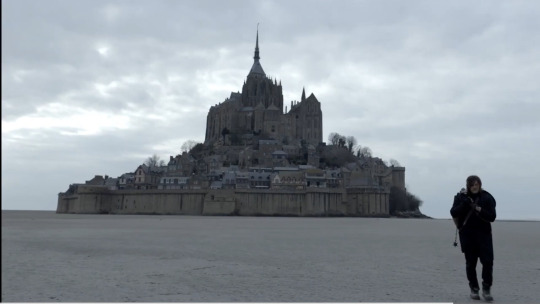
In TWDDD 1x5 Deux Amours we see Daryl, Laurent and Azlan make their way up the river, heading north, to The Nest. We get to know Azlan, whose story involves a tragic loss which took away his reason to live.
We also heard how a clock represented a turning point for him. It saved his life, he explains, and gave him a purpose to live. I took one look at that clock and realized it was the French equivalent to Beth’s DC spoon from 4x12 Still.
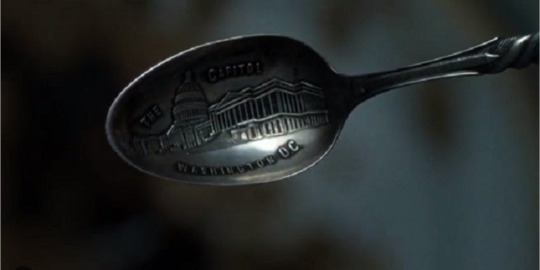
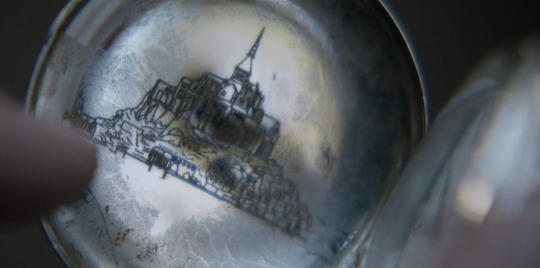
I’ve written a lot about the intersection between Sirius symbolism and North Star symbolism (here and here), and once again, in TWDDD Deux Amours, we see a representation of how “north” represents “home”.
In TWD season 5 we saw it explained by Carl to Judith; that if you’re lost at night, just find the North Star, it’s at the end of the Little Dipper:

Of course we all remember Beth picking up the DC spoon/Little Dipper in Still…
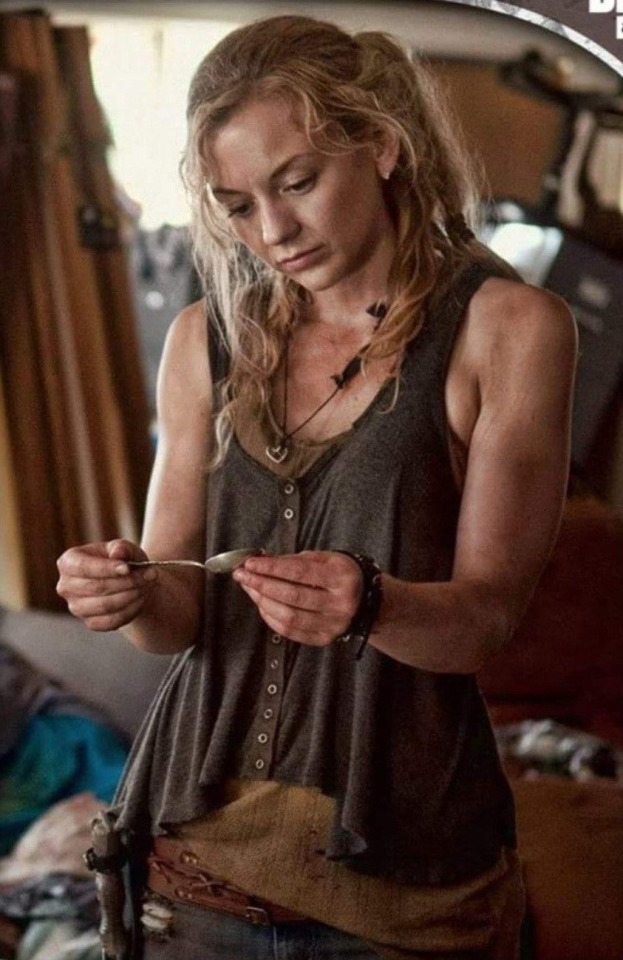
Daryls entire time in France has revolved around traveling north, to the place called The Nest, where he’ll deliver Laurent and get a ticket to a trans-Atlantic cruise in return.
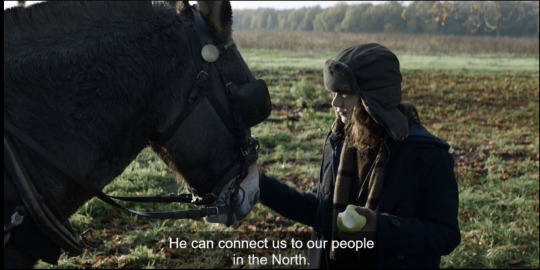
When Azlan dies he gives the clock to Daryl, tells him to follow the river north, until they arrive at the place depicted on the clock, The Nest (which in reality is Mont Saint Michel). When Genet’s people catch up to Daryl and Laurent, Daryl gives the clock to Laurent and instructs him to follow the river until he sees The Nest.
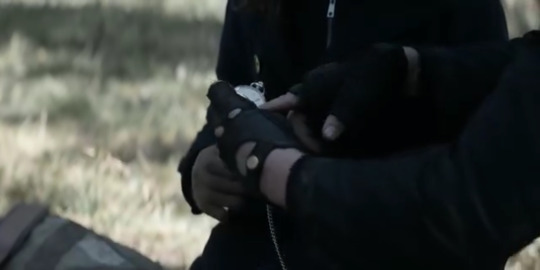
So the navigational themes are strong around both the clock and Beth’s DC spoon. The DC spoon for obvious reasons; the North Star is at the end of the Little Dipper, as Carl explained. The North Star will help you find your way, it’s a compass in the sky.
Azlan’s clock on the other hand, is pretty much a regular compass, in that clocks can be used as compasses. I’m not making that up, a clock can be used as a compass. That is an actual thing that people do.

Basically, what we’re seeing here is that Azlan’s clock is synonymous with Beth’s DC spoon.
And remember how all of Daryl’s efforts of getting to the north involves constantly searching for functioning radios? He’s been talking about radios non stop since he washed ashore in Marseille.
Well, in 1x5 we finally saw him get a hold of a radio. It was in a flashback from right before he was taken aboard the French Research Vessel of Horror, where we also saw a character randomly named Grady!?!???
Totally side-eying that, particularly because we also met another dude named Juno, which @wdway brilliantly recognized as a reference to the Alaska state capital Juneau! Which, again, ties right into the north symbolism because of this license plate from 5x16 Conquer:

That’s the Big Dipper and Polaris (North Star) there on the Alaska state flag!
And remember how I in this post from last week talked about how tptb sometimes uses silly word plays as symbolism? Words and phrases that phonetically sound similar? Like serious/Sirius, beer/bear, Monet/money and the classic Del Arno Foods/"there are no foods"… (which was interestingly also taken from 5x16 Conquer, where we saw the Wolves luring walkers into trailer trucks, in a perfect parallel to what we saw in Daryl’s flashback from Maine,..)
Yeah, speaking of phonetical similarities...
In TWD 10x17 Home Sweet Home we heard Beth's name for the first time in a very long time...
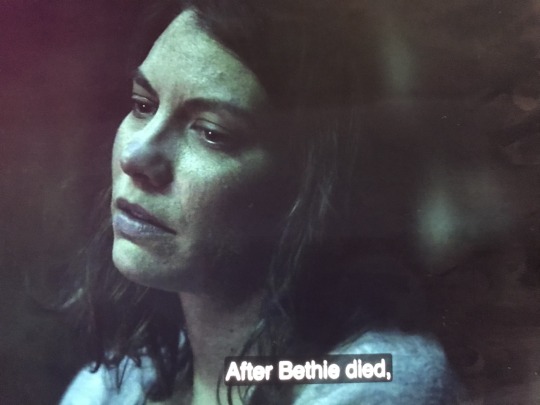
Maggie has no reason to believe that Beth isn't dead so I wouldnt worry about that part. What's interesting is what she's calling her sister; Bethie!
If I was ever instructed to find a name that phonetically sounds like Bethie...

...Bessy sure as hell would be among my top contenders...
Bessy, as in the name the radio operator has assigned to his radio...
I have talked about how radios are Sirius symbolism, right? (that's a rhetorical question, I have talked about it ad nauseum)
And I think I have explained that Sirius means "return/resurrection/coming back" a couple of times as well...
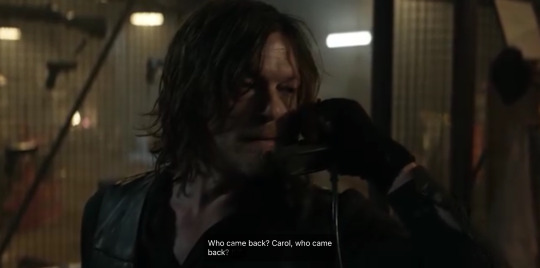
Bessie the Radio sure seems to be well tuned into the symbolism around "returns" and people "coming back"...
You’re free to do with that as you please...👀
#bethyl#daryl dixon#beth greene#team delusional#team defiance#beth x daryl#the walking dead#twd#twddd#home#north star#beth’s dc spoon#the nest
30 notes
·
View notes
Text
" Il mio bisnonno Dorino, classe 1888, diceva di aver combattuto tutte le più grandi battaglie della Prima guerra mondiale. Di certo, era stato protagonista di almeno due conquiste storiche, quella del Carso e quella del Monte San Michele. Militare semplice di fanteria, raccontava incredulo di aver assistito alla morte, al ferimento e alla mutilazione di decine di suoi commilitoni durante i combattimenti, ma di essere rimasto completamente illeso. Neanche un graffio, un proiettile di striscio. Nulla. Tirava fuori questa storia ogni volta, durante le feste di Natale, con la famiglia riunita e qualche bicchiere in corpo. Si commuoveva ricordando gli amici caduti e non si capacitava del proprio destino di miracolato. L’episodio più sbalorditivo però gli era accaduto dopo le battaglie del Carso e del San Michele, quando l’intero battaglione era stato inviato in Albania. In seguito ai successi conquistati anche su questo campo, la truppa aveva ottenuto una licenza premio per tornare a casa qualche giorno. Si era dunque imbarcata al porto di Valona su una nave diretta in Italia, ma pochi attimi prima della partenza è giunto un gruppo di ufficiali e per fare posto ai graduati alcuni militari semplici sono stati fatti scendere. Fra loro c’era anche Dorino. Le sue vibranti proteste per questa ingiusta e improvvisa sostituzione sono rimaste inascoltate. Tuttavia, pochi minuti dopo la partenza la nave è stata silurata e affondata dalle flotte nemiche e l’intero equipaggio è perito nell’attacco. Ancora una volta, la sorte aveva deciso di graziarlo, e nel modo più plateale possibile.
Per quanto fossi molto piccolo, mi ricordo del bisnonno che raccontava queste storie trattenendo a stento l’emozione, anche se solo diversi anni dopo ne avrei compreso il contenuto. Mi sono trovato anche a riflettere sui suoi racconti e sulla sua inspiegabile sorte. Forse è insito nel mio DNA: sono destinato a sopravvivere. È un lascito ereditario che scorre nel sangue della mia famiglia. Proprio come Dorino che ripeteva la sua incredibile storia a chiunque volesse ascoltarla, anche io sono sopravvissuto a una guerra perché il mio ruolo è raccontarla. "
Matteo B. Bianchi, La vita di chi resta, Mondadori, 2023¹; pp. 57-58.
#Matteo B. Bianchi#letture#leggere#felicità#sognare#sogni#La vita di chi resta#ricordi#amore#dolore#libri#lacrime#citazioni letterarie#Grande Guerra#nonni#XX secolo#sorte#letteratura contemporanea#fortuna#destino#predestinazione#prima guerra mondiale#scrittori italiani#autofiction#famiglia#Carso#Albania#Natale#Valona#vita
26 notes
·
View notes
Text

{Meet the French Exorcists!}
Aoex has such an extensive universe with so many different True Cross Order branches around the world. Today I want to present to you a couple of high-class Exorcists from France!
Hector Cessart - Upper First Class Exorcist, all meister, speciality: Dagoon & Tamer, principal of the Exorcist Academy of France, also located in Paris.
Joseph Aury - Former Paladin, now Chancellor (Honorary Knight), all meisters, speciality: Aria, leader of the French True Cross branch (HQ located on Le Mont-Saint-Michel) until he died in the Blue Night
Joséphine Legouix - Upper First Class Exorcist, all meisters, speciality: Knight & Doctor. One of the leading experts when it comes to complicated demonic possessions of human bodies. Her own sword is possessed by a powerful demon from the Gargoyle-category with whom she has a blood pact.
Ophélie de Lys - Upper First Class Exorcist, all meisters, speciality: Tamer & Aria, Member of the Demonic Members Control Office and student of Pater Chevalier. She takes his place as Arc Knight and Head of the Control Office after his death.
Augustin Chevalier - Arc Knight, all meisters, worldwide known Tamer expert, Head of the Demonic Members Control Office within the True Cross Order until he dies due to a possession by Satan.
Oriax - No Title, no meister, yet he is the guardian of the great library of the True Cross Order Europe, located under Notre Dame in Paris. Since decades he serves as a librarian and historian in the most extensive collection of exorcist & demon records in the world. He is a Nephilim and son of the Demon King Lucifer.
39 notes
·
View notes
Text

Sacra di San Michele Monte Pirchiriano, in Val di Susa, provincia di Torino
51 notes
·
View notes